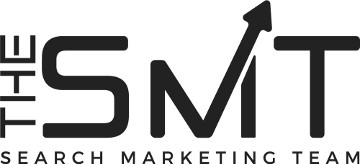Copywriting That Inspires Action
Copywriting is the art and science of using written words to persuade your readers to take the desired action. If you want your customers to take action, then you need to know how to connect with your readers. Your landing pages are the money-makers for your business, and even with a great SEO strategy, you will need to ensure your landing pages are optimized based on your market, customer need/expectations, and business goals.
Many small business owners find it difficult to produce excellent marketing copy for their website and online presence. The bottom line is that the only way you can stay in business is if you’re making a profit. Often times the businesses I work have a great marketing strategy and know their customers, but they lack the hard-hitting, powerful landing pages they need to convert qualified leads.
As a result, their business is losing sales and not hitting their company goals. If you are finding your sales are not where you want them to be and unsure where to start, you should consider looking at your landing pages. The job of a landing page is to make sales, and I use the simple AIDA formula when developing landing pages. Let’s take a look at AIDA for landing pages today!
The AIDA Formula For Copywriting
The AIDA formula has been the go-to process for copywriters to create compelling copy that converts. The reason that copywriters turn to this process is because it is easy to understand and implement. If you follow these principles you will find higher ROI for your marketing dollars and improve conversions across your online marketing strategy.
The good news is that while the principles of this method are classics, you can leverage the benefits of AIDA for your startup landing page designs.
AIDA stands for:
- Attention: Grab the interest of your readers, so they will keep reading the main body of your content.
- Interest: Match your product with the desires and primary interests of your reader.
- Desire: Make sure that your product offer addresses the problems and needs of your user.
- Action: Drive your reader toward the desired action for a conversion.
Attention
The only way your readers will stay on your landing page is if your content grabs their attention early on. This is usually done through the headline, visuals, and video on your page. However, the only way you can grab the attention of your readers is if you understand your target audience, including:
- Preferences
- Dislikes
- Desires/Goals
- Pain Points
Since this is the first contact you have with your audience, you need to make sure that your headline and design of your landing page grabs the attention of your reader. The Internet is a busy place, and your readers are likely bombarded with hundreds of landing pages each day.
The only way to ensure your message stands out is to persuade your readers to keep reading with an attention-grabbing copy on the landing page of your startup.
Interest
Once you grab the attention of your reader, you have the opportunity to connect the interests of your audience with your product. Your landing page copy should continue the message presented through your headline. As you design and write copy for your landing page, you should always be asking yourself what elements about your product interest your target audience?
At this phase of the landing page, your audience is curious about how your product will address their pain points. You hooked them with a great headline, so not you need to provide them with interesting information about your product and show them that you understand their needs.
To keep the reader engaged, you will need to position your product as the perfect solution to their problems by connecting with the deeper desires of your readers.
Desire
While the desire and interests of your target audience are often confused, the desires of your audience have intent. Interest is the beginning stages of excitement, and after enough time the interests of your target audience matures into desire.
To help your audience move from interest to desire, you should include relevant research and other benefits that your product offers based on their needs. Establishing trust is one of the most efficient ways to move your audience toward action, and some of the ways you can build trust with your customers are:
- Social Proof like past clients and other organizations who trust your product.
- Success stories and testimonials. This help establishes your product because you can rely on the testimonies of other people instead of just what you say about yourself.
- Highlight 3rd Party Certifications. These certifications show that you know what you are talking about and relieve some of the pressure because you can use the credibility of those certifications to build trust.
- Highlight press mentions, because these quotes establish you as a trusted source known throughout the industry.
Action
The action is the most important part of a startup landing page because you won’t convert a large enough user base. The action is also called a Call To Action (CTA) and is meant to enter your audience into the first stages of the buying cycle.
Aside from the headline, you should put most of your time and energy into the CTA. You should test your CTA, and here are some tips to test your CTAs:
- Test different button colors. Try to use a color pallet for your button different than the main pages on your landing page, so the button does not blend in.
- Use action text on buttons like “Try Our Free Trial,” “Reserve Your Seat,” and “Download Whitepaper.”
- Use different shapes for your button. Instead of relying on the usual square button, you could include a circular button with a color outline to help the button stand out.
- Use large button text that stands out and attracts attention.
- Try to place your CTA button at different positions on the page. You can try above the fold and location variations of the button at different areas on the page.
- Use button copies that promote the central value proposition of your product.
Great Landing Pages Increase Sales For Your Business & Start Up!
AIDA is a simple and effective way to check your landing pages before you hit “Publish.” You can also use this approach to review existing landing pages to ensure they are ready to make your business money. Don’t waste your time or money on marketing initiatives if your landing pages are not optimized!
You can use the above points to ensure your landing pages and marketing dollars are working as hard as you are for your business goals today!
Author Information
Chris is a Digital Media Strategy Consultant with over 13 years experience helping businesses make more money with focused SEO marketing, freelance copywriting, and PPC management services.



